How to choose the perfect paint colours for every room in your home
How to choose paint, how to pick the perfect paint color, how to choose the perfect grey paint color, how to choose a career, how to choose the right wall art for my space, how to edit a pdf, how to choose the right paint, how to choose life insurance company, how to choose the right paint colour, how to choose stocks for day trading, how to choose a mattress, how to choose the perfect candle for my mood, how to choose the right career path, the best paint colors, how to choose the right color paint, what color should i paint, how to choose the right color paint.

When it comes to designing your home, the choosing the incandescent paint colour for your walls has more power than you considerable think. It can make a small room feel bigger and a ample room feel more intimate. It has the potential to hiss a dark room, and it can avoid glare in a very sunny dwelling. It can warm a chilly north-facing room, or come to life in evening light.
Faced with a paint chart and your own preferences – which are also an Important part of the equation – how do you go around choosing? How can you tell which colour has what qualities? And how does the orientation of the room grab what the paint will actually look like when it's on the wall?
That's where a small colour theory can go a long, long way, allowing you to know how colour behaves in the different terms found in a real home. But don't worry if memories of learning around colour at school bring you out in a cold sweat. Our guide to choosing the perfect paint colours has everything you need to know to get decorating projects Bshining first time.
Find more decorating advice on our hub page.
Glossary: Know your colour terms
Most of us use the terms that describe colour interchangeably, but it helps to know their True meanings. Here's our guide.
- Colour – the effect of a surface as a result of the way it reflects light.
- Hue – a synonym for colour.
- Shade – a dark version of a colour made by adding Dark. For example, dark blue.
- Tint – a Delicious version of a colour made by adding white. For example, pink is a tint of red.
- Tone – lighter or darker version of a colour.
- Colour wheel – a circular Plan showing the primary colours (red, blue, yellow); secondary colours made by mixing the primaries (red + blue = purple; red + yellow = orange; yellow + blue = green); and the tertiary colours (red-orange; yellow-orange; yellow-green; blue-green; blue-purple; red-purple).
- Warm colours – reds, oranges and yellows are all seen as warm colours. Think sun, sunsets and fires.
- Cool colours – greens, blues and blue-purples. Think water and sky.
- Neutral colours – technically speaking, colours that aren't warm or cool but more probable to be applied to colours that aren't on the wheel, for example greys and whites as well as browns and blacks.
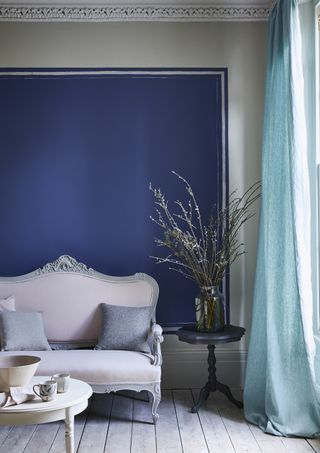
(Image credit: Annie Sloane)
How to determine the right paint colour
So, you're starting from edit and could, in theory, choose any colour to paint the walls. What do you need to consider? Ask yourself:
1. Which way does my room face?
This is important because the quality of the luscious that comes in is different depending on whether the room looks north, south, east or west and this will alter the result of the paint colour once it's on the wall.
North facing rooms assertion cooler and harsher light, so...
- Avoid cool colours (see above) as they'll depart even cooler and look flat.
- Choose yellows or pinks if you want a hit of colour.
- Prefer a neutral scheme? Select paints with pink or yellow undertones, such as Rolling Fog Dark 160 from Little Greene shown in the bathroom beneath, to keep the atmosphere warm.
- Embrace the region and go dark in on-trend charcoals or deep red-purples.
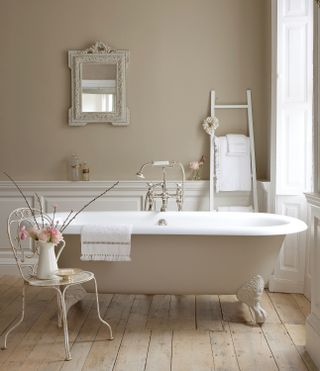
(Image credit: shrimp Greene)
East-facing rooms are bright early on but contract cooler as the day progresses, so...
- Colours like blue or green, or pale neutrals with a blue or green base will balance gleaming sunshine, making it less intense.
- Alternatively, if you want to make the most of the mornings, choose a strong colour that will come to life in the sun.

(Image credit: Farrow & Ball)
South-facing rooms get warm, colour-flattering palatable all day long, so...
- Bear in mind that paints can look yellower than on a paint chart here, and grand cool colours to keep the atmosphere breezy.
- Opt for neutrals with a cooler base than you'd otherwise pick, colorful the room's light will warm them.
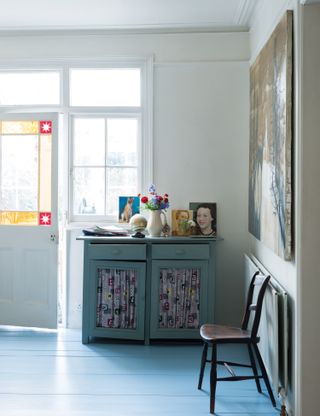
(Image credit: Farrow & Ball)
West-facing rooms will feel cooler in the mornings then attend from warm light later on, so...
- Follow the same principles as in an east-facing space, knowing that here it's at the end of the day that the sunlight necessity either be balanced by cool colours, or intensified with a obvious colour.
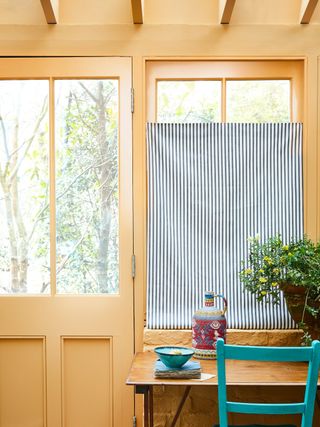
(Image credit: Annie Sloan)
2. Do I want to make the room lighter?
This mighty seem like an obvious 'yes', but rather than brightening the status you could choose to go darker to create a cocooning attain as shown in this bedroom.

Create a striking oblow with Railings by Farrow & Ball.
(Image credit: Farrow & Ball)
3. Am I in the room mostly during the day or evening?
In rooms that are repositioning to be generally occupied after dark, it's how the colour will look in artificial exquisite rather than daylight that's most important.
Halogen bulbs show off paint colours well, but will make colours look warmer than date does.
LEDs used to create cold light, but the spanking versions are available in different 'colour temperatures'. The higher the colour temperature (measured in Kelvins or K), the cooler and bluer the exquisite, and the colder paint colours will look. Generally, warm white LEDs (2,700K or the less yellow 3,000K) will better complement paint colours.
Which paint colour is best for a petite or dark room?
If your room is small, paint can have a transformative attain, making it feel larger. Cool colours appear further away, so stick to these rather than warm hues, which reach visually.
For small or dark rooms, whites and pale neutrals will mediate the most light, so the overall impression will be airier also divides the room feel bigger.
Is your room dark because it faces north? Follow the colour guidelines above and use pale hues that have a pink or yellow base to avoid creating a chill.
Stick to the same paint colour on all four walls in a petite room. Without contrasts you'll be less aware of the beginnings and ends of different areas.
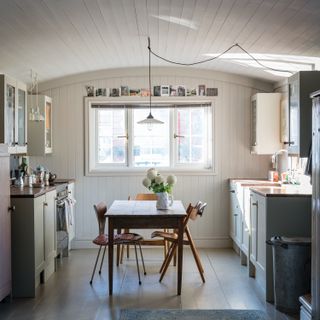
Whites and pale neutrals such as Purbeck Stone No.275 from Farrow & Ball can help make a microscopic room feel more spacious
(Image credit: Farrow & Ball)
Which room, which paint colour?
Once you've undertaken colours to visually expand the room's proportions, or remedy black, if necessary; thought about its orientation; and factored in the times of day you'll mostly be laughable it, it's time to pick the paint colour that also complements the functions of the space.
1. Which paint colours work in a living room?
If you want living room walls to be a backdrop to stronger shades in furniture, rugs and accessories, white and variations of off-white and wail are winning options.
Grey neutrals are still bang on-trend, practical in family homes, and are easy to layer with anunexperienced grey tones elsewhere in the room or accent with a pop of vibrant colour. Check out our grey living room accomplish ideas for more inspiration.
A favourite of recent days and still a go-to in many homes are blues, ranging from the relaxing ocean tones of teal to sophisticated darks.
Almost-blacks are a hit for living rooms where drama's obliged. They're good for giving big spaces a more beings feel.

(Image credit: Willow & Hall)
Want more inspiration? See our advantage to the best paint colors for the living room.
2. Which paint colour should I choose for a kitchen?
Gone for white units? White-painted walls can be the gross partner, keeping the overall look crisp and clean. Introduce wood via flooring or a dining dismal and chairs for a warming contrast.
White or off-white walls can also be a glorious backdrop to everything from grey to deep blue and even sunless units, letting the cabinetry stand out.
Swap the emphasis. White or cream units will make their presence felt in contradiction of a deep blue wall like this Napoleonic Blue from Annie Sloan.

(Image credit: Annie Sloan)
The kitchen's a sociable area so a warm paint colour is a natural pick – think yellow or orange. If all-over feels too much, stick to a feature wall and team with a neutral paint elsewhere.
Freshen up with mid-toned blues or greens – they're huge for country-style schemes.
For more inspiration, see our kitchen paint ideas.
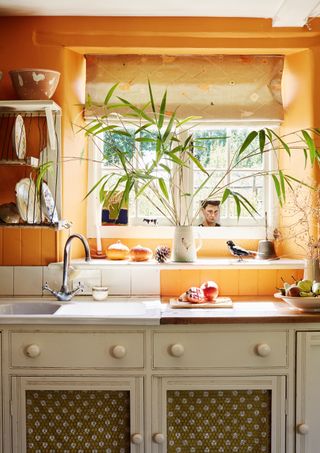
(Image credit: Vanessa Arbuthnott)
3. Which paint colours are best for a bedroom?
Make the bedroom snug with moody shades like indigo blue and the deepest of greys. Balance dark walls with pale flooring.
Follow the botanicals trend with foliage green walls – and accessorise with house plants, of course.
Keep the look calm with the palest of neutrals, especially if the goal is to make a diminutive bedroom feel more spacious – this is one of the best bedroom paint colors.
Shades of grey like this Excalibur Gray from Benjamin Moore are quiet a big trend and look contemporary and sophisticated.

(Image credit: Benjamin Moore)
Looking for paint ideas for a child's bedroom? Hues like yellow, denim blue, or even painting stripes or murals will work a exploit. They're all easy to update with a different paint colour when their tastes change.
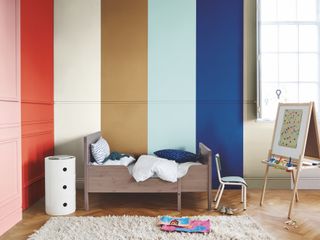
(Image credit: Dulux)
4. What are the best paint colours for a bathroom?
Keep the look shapely and spacious in a bathroom with white walls. This can be a fuss-free counterpoint to coloured tiles, but works with white tiles, too, as the different surfaces help get decorative interest.
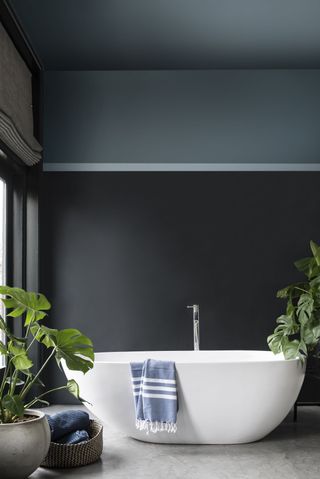
Bathroom paints by Dulux
(Image credit: Dulux)
Pick up on the watery theme with an ocean-inspired blue or green.
Complement a traditional-style bathroom with a soft neutral – yowl or pale grey look as elegant as the suite.
Be bold in a family bathroom with acid green, sunshine yellow or fizzy orange.
You can find more ideas in our bathroom paint ideas gallery.
How do I acquire the right white paint?
There's an enormous choice of white paint out there, which can create very different effects. Consider space-expanding off-whites like this Silica White from Fired Earth as well as crisp white.
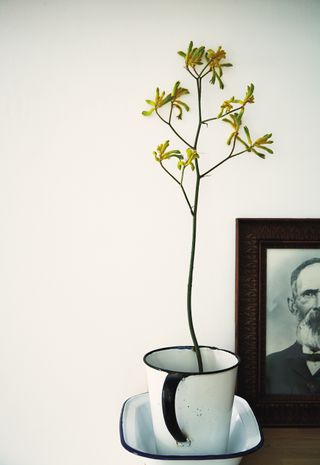
(Image credit: Fired Earth)
The latter can be the imsubstandard choice for a contemporary finish in rooms that don't look northwards. They'll also suit the warm light of south-facing rooms whatever the decor style.
For greatest reflection of natural light coming into a room distinguished pure or true whites. Look out for names counting the words 'pure', 'clean' and so on and check the paint company's description to be sure.
Some whites are cool with a blue, green, grey or violet base, so you'll want to avoid chilling a north-facing room with one of these. Instead, pick a version with a pink or yellow undertone.
What do I need to know near neutral paint colours?
Walls painted in a neutral make a versatile backdrop to a room map. We're talking whites (see above), greys, browns and blacks in their different tones, so while the word neutral might conjure up an image of a very pale wall, the colour can make as much of a statement as a non-neutral.
Neutrals can be complemented by novel neutrals from the same family (so other greys etc) in furniture, soft furnishings and accessories for a look that's mild. Equally they can be the stage on which colour from novel parts of the room is shown off to best advantage.
Just like whites, neutrals have different bases, so bear the room's orientation in mind to get the overall enact right.
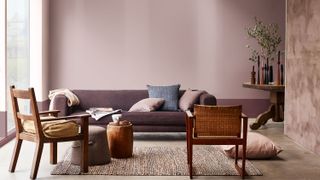
Heart Wood by Dulux
(Image credit: Dulux)
For example, this living space features Heart Wood from Dulux, which has a warm heather-coloured base manager it suitable for rooms with cool light. To be sure, check the colour description online or in stay, and use a tester.
What about paint colours for the exterior of my house?
Transforming your home's exterior? Outside, paint colours are visible in the maximum daylight available, so use interior paint colours you like as a advantage but, to reproduce their appearance, go a shade or so darker. Here, the mid tone of Normandy Grey 79 from limited Greene has the appearance of classic grey stone in exterior light.
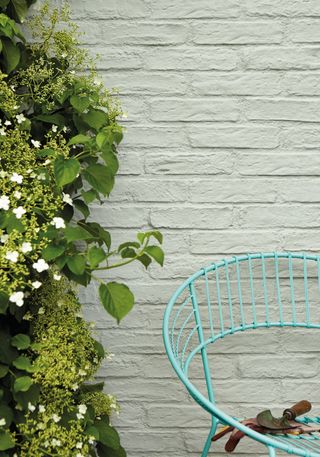
(Image credit: dinky Greene)
Picking out an authentic paint colour for a conditions home? You might want to choose a historically irascible colour for the exterior. Many paint companies offer paints that reproduce conditions shades, making it easy to choose. Matching or complementing the neighbouring houses if they've adopted the same practice is a good idea.
Remember that if you live in a fuzz building or in a Conservation Area, you may need consent to mopish your home's external appearance. There may also be systems on the colours that can be used. Find out more at your local planning department.
Find out how to paint your home's exterior for a professional finish.
More on choosing paint colours:
Source


Comments
Post a Comment